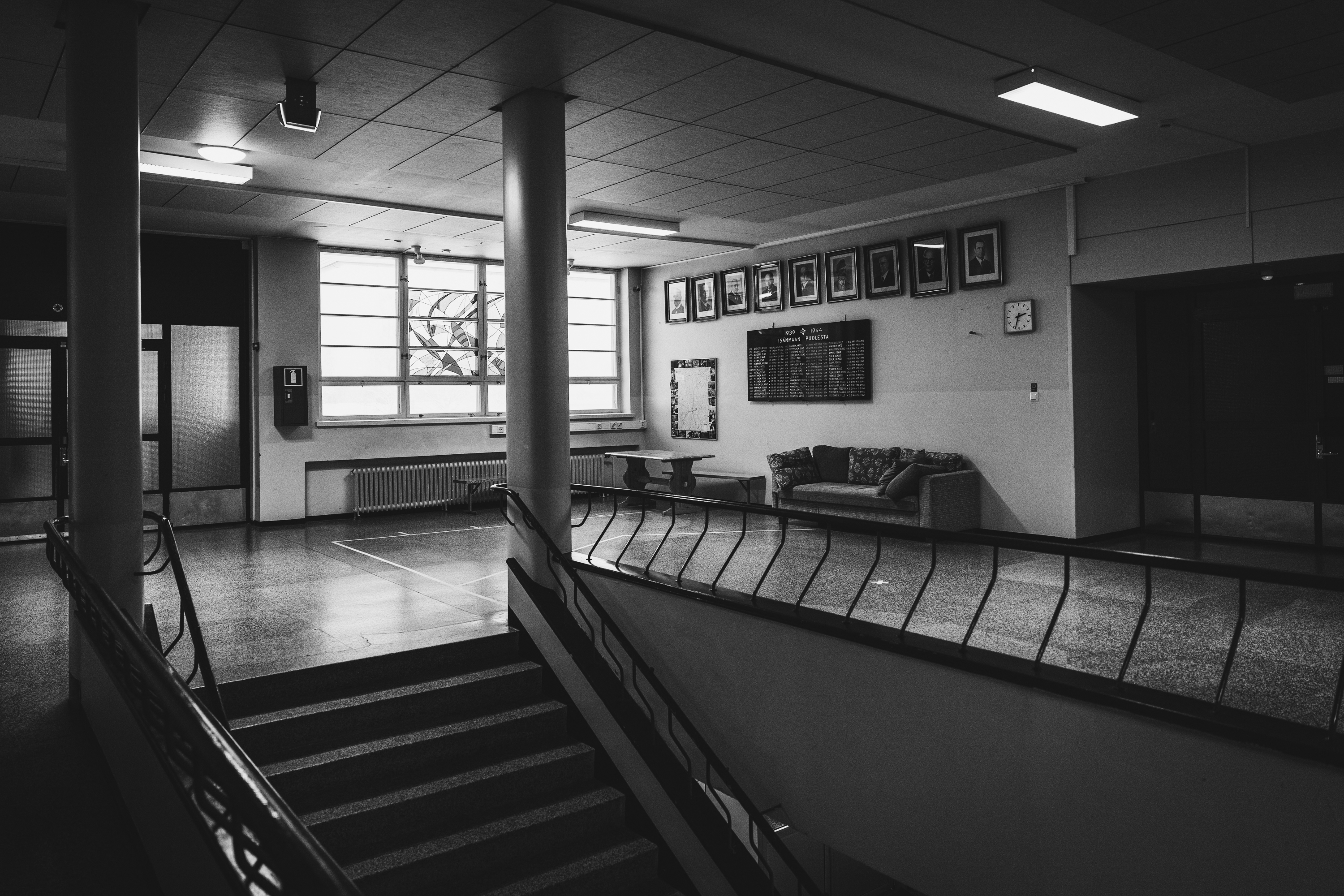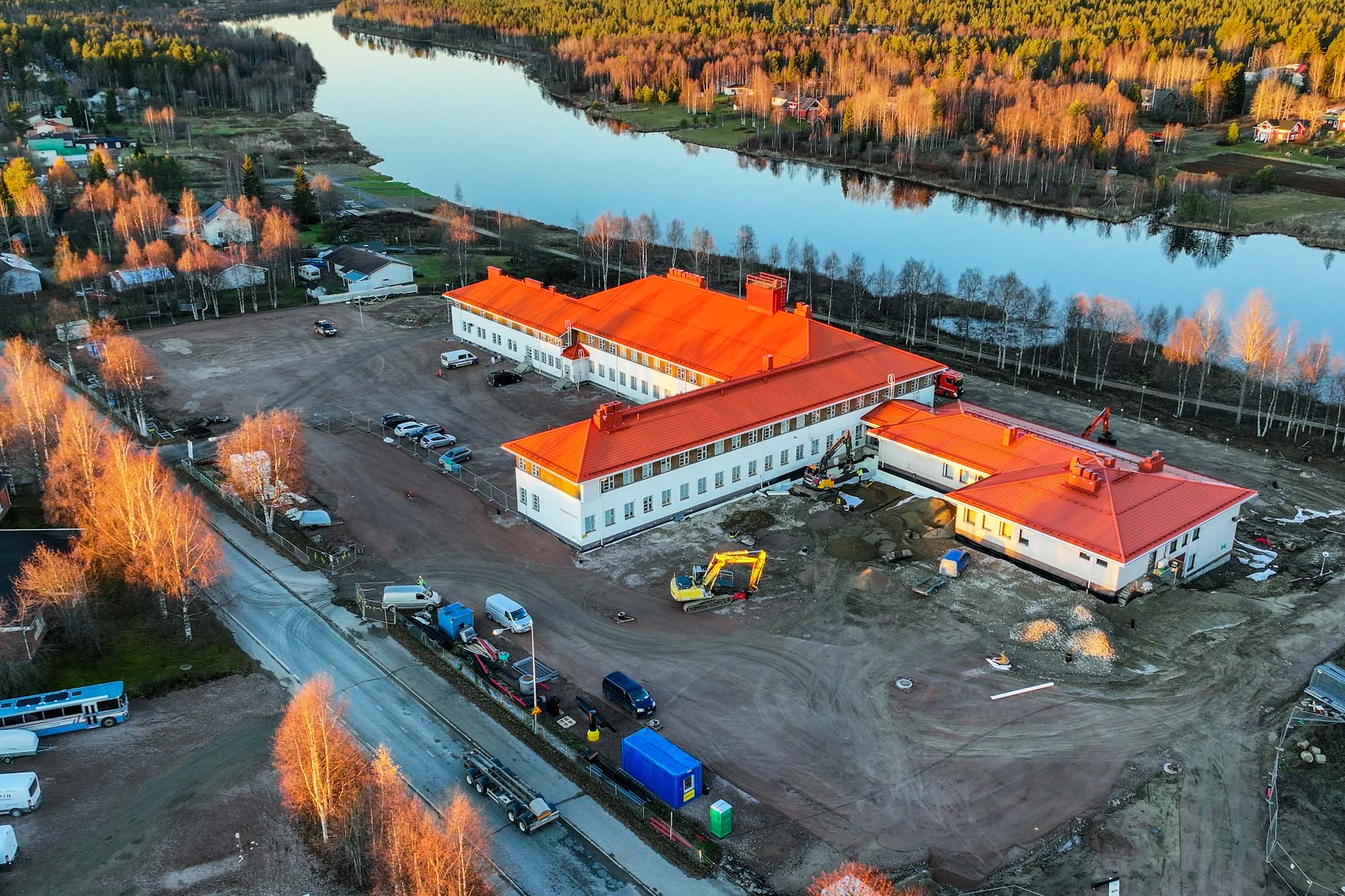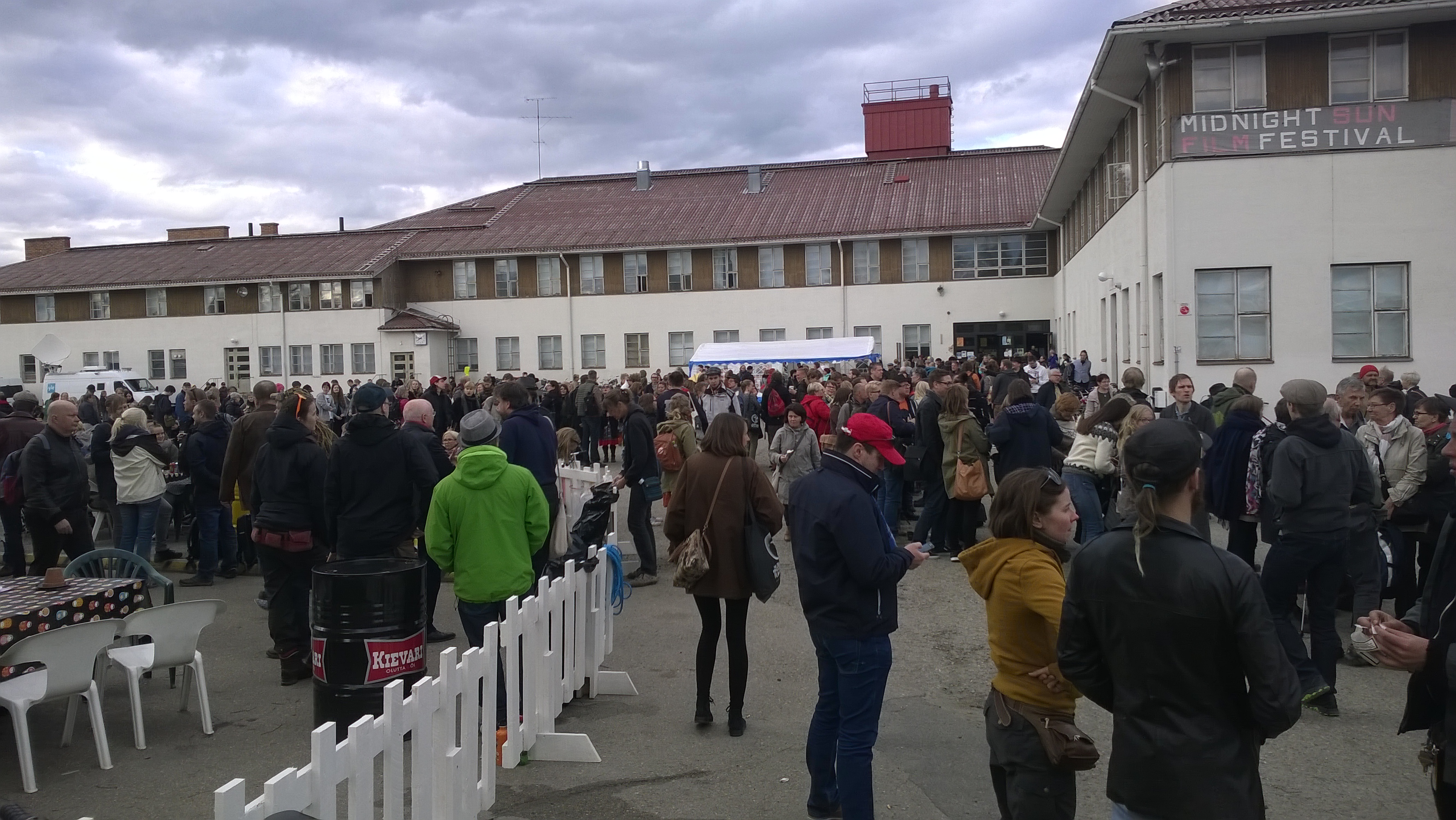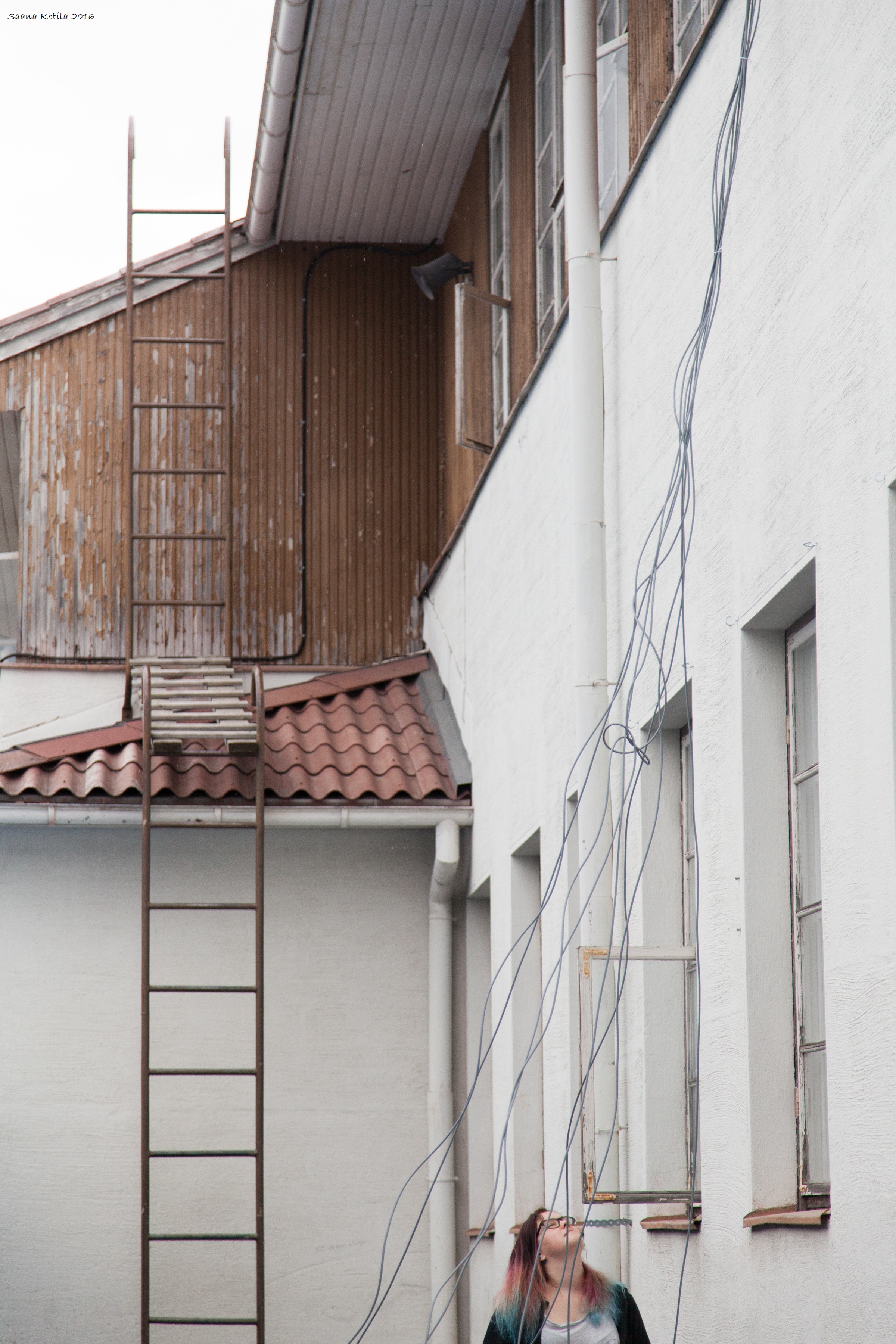Kitisenranta Culture house
Extensive renovation of the museum-protected building to be an impressive and accessibilible center
The Kitisenranta culture house project is not just a building: it is a community hub that enlivens our culture and brings together people from all walks of life. Culture house offers a place for learning, art and community gathering. It is a place where every resident of Lapland can find something for themselves, whether it is exhibitions, performances or self-expression through art and culture. Culture house will continue to function as the center of the world-famous Sodankylä film festival.
Finland
Vasantie 9, 99600 Sodankylä
Early initiative
Yes
Yes
Yes
No
No
758: Sodankylä (FI)
The goal of Sodankylä municipality's strategy is that it is good to grow, live, work and play in Sodankylä. A truly functioning cultural house improves the quality of life of the municipality's residents by offering a diverse range of cultural offerings, even more diverse hobby opportunities and facilities. Sodankylä has several facilities related to sports and hobbies, and a cultural house with art and cultural hobby facilities would create even more diverse hobby opportunities for all municipal residents in Sodankylä. Culture house strengthens community and identity: it creates a place where people can gather, network and participate in common events and even host their own events. Culture house functions as a low-threshold meeting place, a "living room" for the citizens across cultures, genders and ages.
A cultural center can create jobs, attract new residents to the area, and it can also have a positive effect on tourism and image building. Kitisenranta cultural house offers facilities and opportunities for the development of art, music, theater and other cultural fields, and this supports growth and learning.
A cultural center can create jobs, attract new residents to the area, and it can also have a positive effect on tourism and image building. Kitisenranta cultural house offers facilities and opportunities for the development of art, music, theater and other cultural fields, and this supports growth and learning.
Inclusive
Accessibility
Cultural heritage
Architectural heritage
Multifunctional
In the renovation and design of the Kitisenranta Cultural House, sustainable development has been taken into account in many ways. Sodankylä munipilaty`s Climate Roadmap Action Plan aims to reduce energy consumption and improve the energy efficiency of buildings. Energy-efficient solutions such as modern heating and cooling systems and energy-efficient windows and insulation are taken into account. When renovation work starts, efforts will be made to use local services and products as much as possible.
The municipality of Sodankylä is strongly committed to moving towards a more sustainable future. In 2024, the municipality created a Climate Roadmap, which set out targets and policies to reduce emissions. The municipality is also part of the Hinku network, where municipalities aim to reduce emissions in the region and move towards carbon neutrality.
All design work takes into account the preservation of the old: energy efficiency is not sought at the expense of the original beauty of the building, but the red thread of the design is to preserve the original splendour of the building as much as possible.
The spaces of the House of Culture have been designed to be flexible and multifunctional in cooperation with its users, serving a wide range of events and user groups. This reduces unnecessary construction and under-use of space, which contributes to energy savings.The municipality of Sodankylä has already invested in the building: in 2023 the roof of the building was replaced and in 2024 an extensive renovation of the courtyard and foundation was carried out, while a thorough renovation of the interior is a natural continuation of the work already done.
The municipality of Sodankylä is strongly committed to moving towards a more sustainable future. In 2024, the municipality created a Climate Roadmap, which set out targets and policies to reduce emissions. The municipality is also part of the Hinku network, where municipalities aim to reduce emissions in the region and move towards carbon neutrality.
All design work takes into account the preservation of the old: energy efficiency is not sought at the expense of the original beauty of the building, but the red thread of the design is to preserve the original splendour of the building as much as possible.
The spaces of the House of Culture have been designed to be flexible and multifunctional in cooperation with its users, serving a wide range of events and user groups. This reduces unnecessary construction and under-use of space, which contributes to energy savings.The municipality of Sodankylä has already invested in the building: in 2023 the roof of the building was replaced and in 2024 an extensive renovation of the courtyard and foundation was carried out, while a thorough renovation of the interior is a natural continuation of the work already done.
Kitisenranta was originally designed as a school by the renowned Reconstruction-era architect Yrjö Lindegren.The building served as a school from 1951-2007,which means that the building has touched a large number of Sodankylä residents in one way or another over the years.Since the end of school activities,the building has served as a house for the arts and cultural activities of the regional community college,Revontuliopisto.Every week, more than 600 people of all ages attend courses in the different arts.The youngest participants are music school students aged 1 and the oldest are craft enthusiasts aged almost 90.Kitisenranta is an important performance space for various art forms, but the accessibility of the space discourages visitors.The initiative to build a cultural house has come from local residents,local organisations and the film festival's board.These actors have been working together for years to promote the development and renovation of this architecturally significant site.The aim and desire of the promoters of the project has always been clear:to make the House of Culture a focal point for local artistic and cultural activities in particular.The building itself is a building of great cultural and historical value and is protected in the town plan.The simple,noble appearance of the building,set in a beautiful riverside landscape,has deteriorated over the years,but the cultural house project will restore it to its original splendour,while respecting the surrounding environment.The project will pay particular attention to improving accessibility,with the aim of creating an inspiring environment that combines old and new and is genuinely accessible to all.With the renovation,Kitisenranta will continue its long history as an important local meeting place where people from different backgrounds come together to create new memories.
The Kitisenranta House of Culture will be renovated primarily for the use of local residents and residents of the surrounding area. The aim of the Kitisenranta Cultural House is to be a lively, low-threshold meeting place, providing a framework for the practice of art and culture and for highlighting local cultural history. For the municipality of Sodankylä, citizen participation and cooperation is a strategic value and therefore the building will house offices for both organisations and municipal cultural staff. Having different actors working under the same roof creates a huge synergy advantage for strengthening cooperation and developing activities.
In the municipality of Sodankylä, recreation is free of charge for all persons under the age of 18, and this principle also applies to the future cultural house and its pricing. In addition, the premises owned by the municipality have their own pricing for associations and businesses: the municipality wants to ensure that small operators and associations can also afford to use and benefit from the facilities in a variety of ways.
An accessibility survey was carried out in 2024 and found the building to be highly accessible. One of the main objectives of the renovation is to increase accessibility in terms of appropriate design, i.e. to make solutions suitable for all. This will reduce the need for separate accessibility by taking into account people's diverse needs from the outset. Through accessibility, equality will also be improved: everyone who wants to will be able to participate in the events and activities organised in the House of Culture.
In the municipality of Sodankylä, recreation is free of charge for all persons under the age of 18, and this principle also applies to the future cultural house and its pricing. In addition, the premises owned by the municipality have their own pricing for associations and businesses: the municipality wants to ensure that small operators and associations can also afford to use and benefit from the facilities in a variety of ways.
An accessibility survey was carried out in 2024 and found the building to be highly accessible. One of the main objectives of the renovation is to increase accessibility in terms of appropriate design, i.e. to make solutions suitable for all. This will reduce the need for separate accessibility by taking into account people's diverse needs from the outset. Through accessibility, equality will also be improved: everyone who wants to will be able to participate in the events and activities organised in the House of Culture.
Local residents and arts and cultural operators have been actively consulted and feedback gathered to ensure that the House of Culture genuinely meets the needs of the community.A number of opportunities to influence the project have been organised and will continue to be organised as the project progresses.Representatives of major stakeholders have been selected to be part of the project steering group,giving them the opportunity to have a real say in the different stages of the project.Sodankylä has a very active network of organisations:there are currently 274 organisations in the municipality,operating in a wide range of fields.The municipality is also home to Organisation Centre Järjestökeskus Kitinen. The purpose of the Järjestökeskus is to increase the well-being of local residents by strengthening the operating conditions of local organisations,promoting the voluntary activities of organisations,enabling cooperation between different organisations and promoting the involvement of organisations and cooperation with the public sector.A much better-serviced facility is planned for the Järjestökeskus in the House of Culture,as this is seen as strengthening cooperation between the municipality and the third sector.In addition,the location of the Järjestökeskus in the House of Culture reinforces the House of Culture's aim to serve as a low-threshold meeting place for all citizens of the municipality.The involvement of local citizens will ensure that the House of Culture is tailored to the needs of the community.Through this participatory experience, the Cultural House will become more relevant to its users.The collaborative nature of the project will foster social cohesion and inclusion by working together towards a common goal.The wish to turn Kitisenranta into a cultural centre was originally expressed by the local residents, and although the project has taken years to develop,active residents have been eager to start planning the cultural house of their dreams.
During the needs assessment,10 different events were organised during which it was possible to influence the content of the project.In addition to the events,a survey of local residents and visitors to the film festival was carried out.Since the needs assessment phase,representatives of the different sectors of the municipality have been involved in the working and steering groups of the project.In addition to the project manager and the project leader,the needs assessment working group included the cultural coordinator,the head of facilities services,the head of leisure,the director of education and the director of development.The project steering group consisted of senior officials and political decision-makers:the mayor,the directors of development,technical and welfare and education and the presidents of municipal council and board, technical committee and the welfare and education committee.During the project planning phase,a representative of the Sodankylä Film Festival and the assistant principal of the Community College were also invited to the steering group.As architectural design progresses,users are still heavily involved in influencing the design of the spaces;in addition to being beautiful and multifunctional,they must be functional in practice and meet the needs of the planned activities.The project has actively engaged with various regional and national networks to learn and hear about good practice.Examples of networks:Lapin Liitto, Suomen kulttuuri,- ja tapahtumatalot,Makua-verkosto(regional cultural expert group),Lapin Lasten kulttuurikeskus,Taiteen ja kulttuurin tilat-verkosto,Elinvoimaa kulttuurista-verkosto.In addition,during the needs assessment,the views of various professional actors in the field were sought:the Lapland Chamber Orchestra and the Regional Theatre of Lapland.At European level,the project manager has joined ERRI(European regions research and innovation network).
Architecture and the design of the overall appearance of the municipal centre are closely linked to the House of Culture and its design. The building and its surroundings must be not only aesthetically pleasing but also functionally efficient. The building is a building of cultural and historical interest and of great value in terms of the image of the village. The aim is to create, together with the various professionals involved, a whole that takes account not only of energy efficiency and sustainability, but also of intelligent technology, without forgetting the architecture of the building. Throughout the design process, cultural professionals and other users of the building will be involved, which will be reflected in the versatility of the space. The interaction between the different users and actors has led to a better understanding of each other's perspectives and needs, improving the overall quality and outcome of the project.
The municipality is investing in a massive project at a time when national funding for culture and the arts is being cut. The aim is to show appreciation for arts and cultural activities by creating a genuinely functional space for users, which will also allow for the development of activities. The aim is to bring culture as close as possible to every citizen. The House of Culture is intended to provide a wide range of cultural experiences and activities for local residents.
The House of Culture project is not only locally but also regionally significant. In Lapland, people are generally used to going to larger towns hundreds of kilometres away for cultural activities. Sodankylä's central location in Lapland makes it possible to initiate a new kind of cooperation not only with cultural consumers and operators in neighbouring municipalities. The municipality of Sodankylä wants to create an accessible, versatile and sustainable cultural centre in an old building of local historical and architectural value.
The House of Culture project is not only locally but also regionally significant. In Lapland, people are generally used to going to larger towns hundreds of kilometres away for cultural activities. Sodankylä's central location in Lapland makes it possible to initiate a new kind of cooperation not only with cultural consumers and operators in neighbouring municipalities. The municipality of Sodankylä wants to create an accessible, versatile and sustainable cultural centre in an old building of local historical and architectural value.
From the very beginning, the project has focused on people: current users, potential future users and local residents. The Kitisenranta Cultural Centre has been planned since the early 2000s. At different stages of the planning process, people have been involved, for example, from organisations, local cultural activists, students from the University of Oulu's Department of Architecture and the municipality of Sodankylä.
In 2023, the Sodankylä Municipal Government made a formal decision to turn Kitisenranta into a cultural centre. When the project started in 2024, previous plans have been used as background material, but in this project, planning and participation have been the main approaches.
Service design methods have been chosen as the preferred methodologies because the needs of users have been put at the heart of the project. The methods used support the emergence of solutions in a creative way and in search of new ideas. They help to bring together and integrate many different perspectives and get people working towards a common goal. Different service design methods (surveys, interviews, workshops) were used during the needs assessment process. These methods will also be used in project and implementation planning.
In 2023, the Sodankylä Municipal Government made a formal decision to turn Kitisenranta into a cultural centre. When the project started in 2024, previous plans have been used as background material, but in this project, planning and participation have been the main approaches.
Service design methods have been chosen as the preferred methodologies because the needs of users have been put at the heart of the project. The methods used support the emergence of solutions in a creative way and in search of new ideas. They help to bring together and integrate many different perspectives and get people working towards a common goal. Different service design methods (surveys, interviews, workshops) were used during the needs assessment process. These methods will also be used in project and implementation planning.
Community-led design: the design phase of the project has involved extensive stakeholder consultation, which has helped to identify local needs and aspirations. This approach can be applied to other projects to better meet community expectations.
Multi-purpose facilities: the Cultural Centre's facilities have been designed to be multi-purpose to accommodate a range of events and activities.
Use of technology: the project will make use of modern technologies, such as energy-efficient solutions and digital infrastructure, to improve the usability and comfort of the spaces.
Multi-purpose facilities: the Cultural Centre's facilities have been designed to be multi-purpose to accommodate a range of events and activities.
Use of technology: the project will make use of modern technologies, such as energy-efficient solutions and digital infrastructure, to improve the usability and comfort of the spaces.
The Kitisenranta House of Culture can respond to many global challenges by providing local solutions.
The House of Culture serves as a low-threshold meeting place where people can participate in various cultural and artistic events. This strengthens a sense of community and inclusion, which is particularly important in rural areas.
The House of Culture hosts temporary exhibitions, workshops and performances that contribute to the preservation and transmission of local cultural heritage to future generations. The premises of the House of Culture provide a framework for a variety of training courses and seminars on a wide range of topics, thereby increasing local people's understanding of global issues.
The House of Culture serves as a low-threshold meeting place where people can participate in various cultural and artistic events. This strengthens a sense of community and inclusion, which is particularly important in rural areas.
The House of Culture hosts temporary exhibitions, workshops and performances that contribute to the preservation and transmission of local cultural heritage to future generations. The premises of the House of Culture provide a framework for a variety of training courses and seminars on a wide range of topics, thereby increasing local people's understanding of global issues.
The aim is to create aesthetically pleasing and inspiring environments that improve people's quality of life. In many ways, the building is currently at the end of its technical life. The design focus is on eco-friendliness and sustainability, supporting the green transition and reducing environmental impact. While it is important to renovate the building as a whole, it is even more important to create a functional framework for a wide range of artistic and cultural activities.
Through the House of Culture, the municipality supports and sustains communities where everyone can participate and feel included, taking into account diversity and local specificities. Improving the accessibility of the House of Culture will increase equality and enable a diverse range of users to participate in both leisure and event activities.
Through the House of Culture, the municipality supports and sustains communities where everyone can participate and feel included, taking into account diversity and local specificities. Improving the accessibility of the House of Culture will increase equality and enable a diverse range of users to participate in both leisure and event activities.




